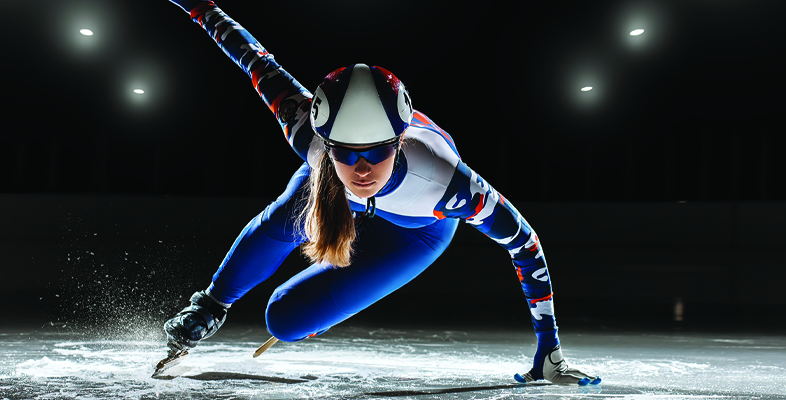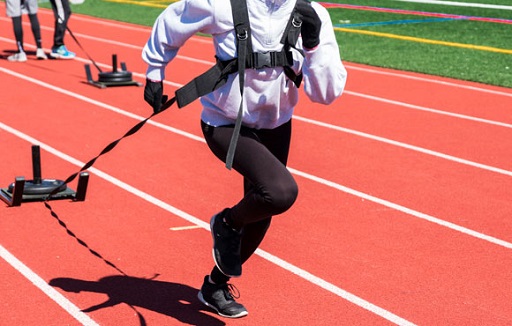2.3 Developing speed: methods
After gaining an understanding of the biomechanics and physiology of speed, you can now turn your attention to the training methods that may be used to develop speed. Plisk (2008) identifies three methods for developing speed: primary, secondary and tertiary methods.
- Primary methods focus on executing sound movement technique in a specific task. Initially primary methods of developing speed tend to be performed at speeds slower than those used in the real situation to ensure that the mechanics of the movement are correct, progressing to full speed as the individual develops their skills (for example, with a high knee drill).
- Secondary methods involve developing specialist skills in modified conditions and include sprint resistance and sprint assistance methods.
- a.Speed resistance methods aim to provide resistance without interrupting movement mechanics. This resistance may come from physical resistance (as with running while pulling a sled or with a parachute).
- b.Speed assistance methods aim to facilitate movements at a faster speed than normal (‘over-speed’) and include downhill running and running while being towed.
- Tertiary methods involve developing general skills and abilities and include the development of mobility (as with a dynamic lunge with rotation), strength (as with resistance training) and speed-endurance (as with interval training).

